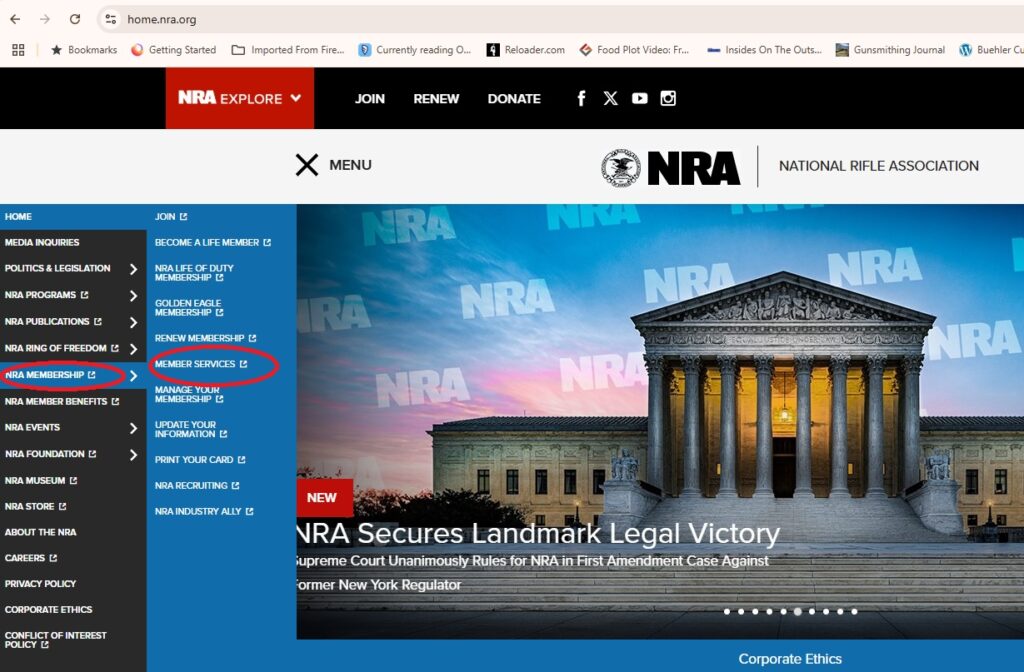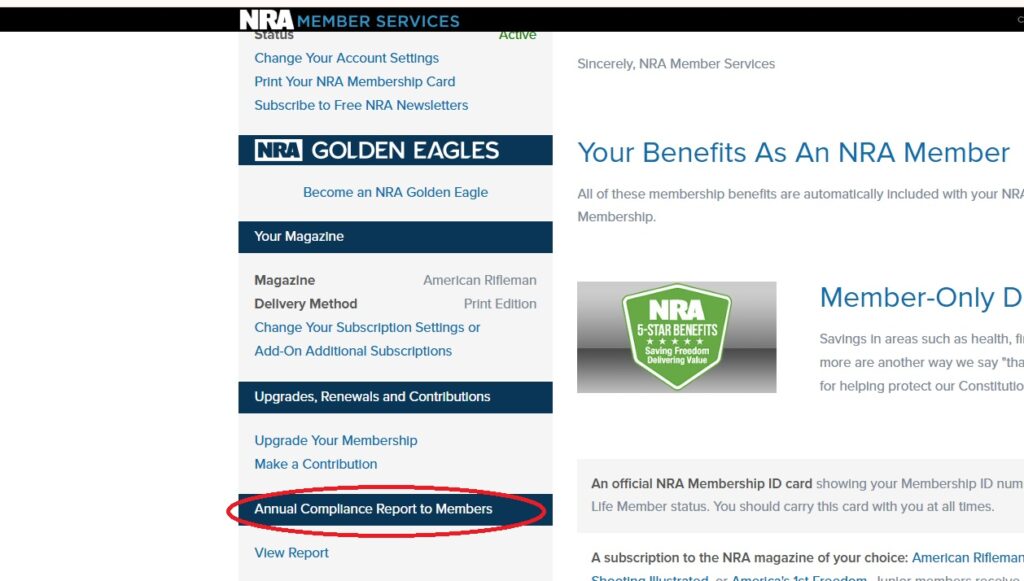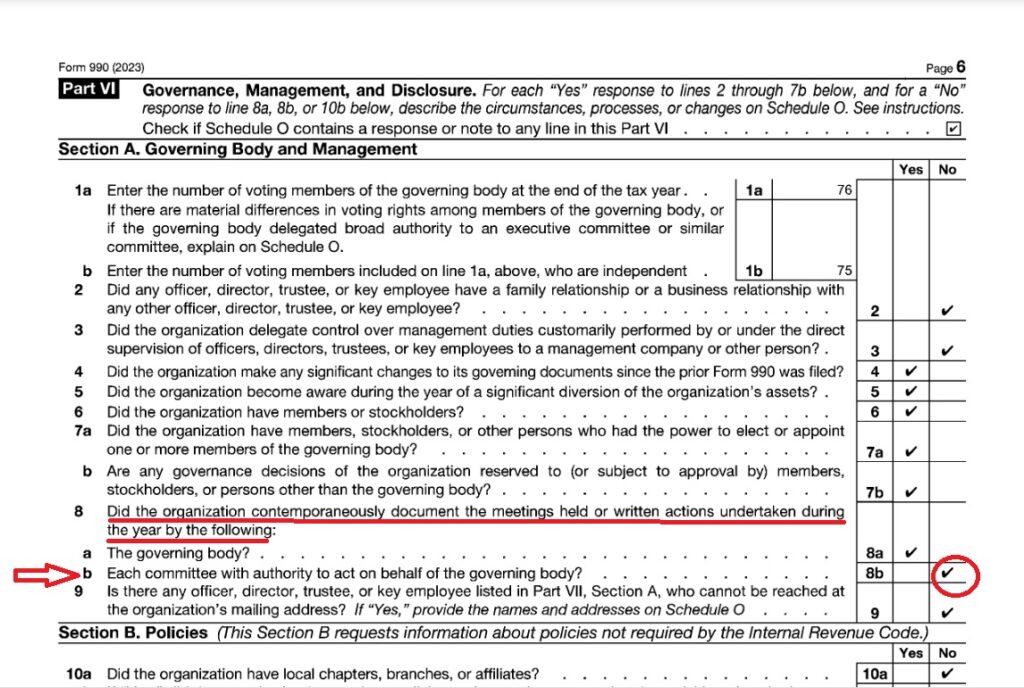One of the key pledges of the reform candidates is transparency. It is one of our core values. The members of the NRA have been kept in the dark for much too long.
A friend mentioned something dealing with the NRA’s 2023 Form 990 to me and I decided to investigate a little further. Part VI of the form asks about an organization’s governance, management, and disclosure. All organizations are required to answer all the questions in Part VI though Federal law doesn’t mandate any particular form of management structures, operational policies, or disclosure practices. That said, the IRS does consider the answers to these questions as being helpful in ensuring tax compliance.
There are two questions in particular dealing with transparency as evidenced by disclosure and documentation. They are Part VI, Lines 8a and 8b.
From the IRS Form 990 Instructions:
Answer “Yes” on lines 8a and 8b if the organization contemporaneously documented by any means permitted by state law every meeting held and written action taken during the organization’s tax year by its governing body and committees with authority to act on behalf of the governing body (which ordinarily don’t include advisory boards). Documentation permitted by state law can include approved minutes, email, or similar writings that explain the action taken, when it was taken, and who made the decision. For this purpose, contemporaneous means by the later of (1) the next meeting of the governing body or committee (such as approving the minutes of the prior meeting), or (2) 60 days after the date of the meeting or written action. If the answer to either line 8a or 8b is “No,” explain on Schedule O (Form 990) the organization’s practices or policies, if any, regarding documentation of meetings and written actions of its governing body and committees with authority to act on its behalf. If the organization had no committees, answer “No” to line 8b.
As you can see in the screen shot below, the NRA answered Yes to 8a and No to 8b. This means that the NRA kept contemporaneous minutes of their Board meetings (8a) but the committees of the Board did not (8b). The committees authorized to act on behalf of the full board include the Executive Committee, the Audit Committee, and the Special Litigation Committee.
Let’s go to a screen shot of the relevant portion of Schedule O to see the explanation of why the NRA answered No on Part VI, Line 8b.
We see that the Executive Committee kept documentation in the form of approved minutes. That’s good.
We also see that the Audit Committee kept documentation of their actions in the form of both approved minutes and written reports. That’s good as well.
And then there is the Special Litigation Committee which meets “informally”.
Informally? You are meeting to discuss litigation that originally called for the dissolution of the NRA and you are only meeting “informally”? WTF!
Whose idea was it to meet “informally” and what was the rationale behind it? Was the purpose to keep the rest of the Board and the members of the NRA in the dark? Mind you, the discussions on the litigation between the members of the SLC and the attorneys from Brewer, Attorneys and Counselors, would have been privileged and not ordinarily discoverable by the NY Attorney General’s Office.
I have been told by one board member when he questioned this that the SLC always met in executive session and thus didn’t keep minutes. So is executive session normally considered “informal”? While I am not a lawyer or an expert on NY Not for Profit Law, I really don’t think so.
Then there is the whole business of approving almost $200 million in invoices for legal fees and only documenting it by email. While a valid method per the IRS, the amount of money expended would seem to demand much more documentation and in a more formal manner. This is especially true as this has drained the coffers of the NRA. Moreover, who received these emails and were they made available to the Board as a whole?
The whole rationale for even having a Special Litigation Committee was that both Wayne LaPierre and John Frazer were named defendants in the NY trial. In a normal litigation, they would have been the two most involved as CEO/EVP and General Counsel. This leads me to ask whether either of them met with the SLC and the attorneys to discuss the litigation and its strategies. Did Wayne get special briefings on the litigation from Bill Brewer and his associates? I can’t imagine Wayne would just go along his merry way staying in the dark about the trial other than what concerned him directly without asking questions of Brewer. Remember, Wayne was in charge of keeping the NRA in existence so as to further his own lavish lifestyle.
This whole lack of transparency with regard to the decisions of the SLC just stinks. Documentation of almost $200 million in legal billings merely by email also reeks. While the SLC will probably be officially disbanded at the NRA Board of Directors’ winter meeting in Dallas, this is an issue that demands answers. At the very least, an audit – preferably a forensic audit – of the billings by Brewer, Attorneys and Counselors, is called for.




